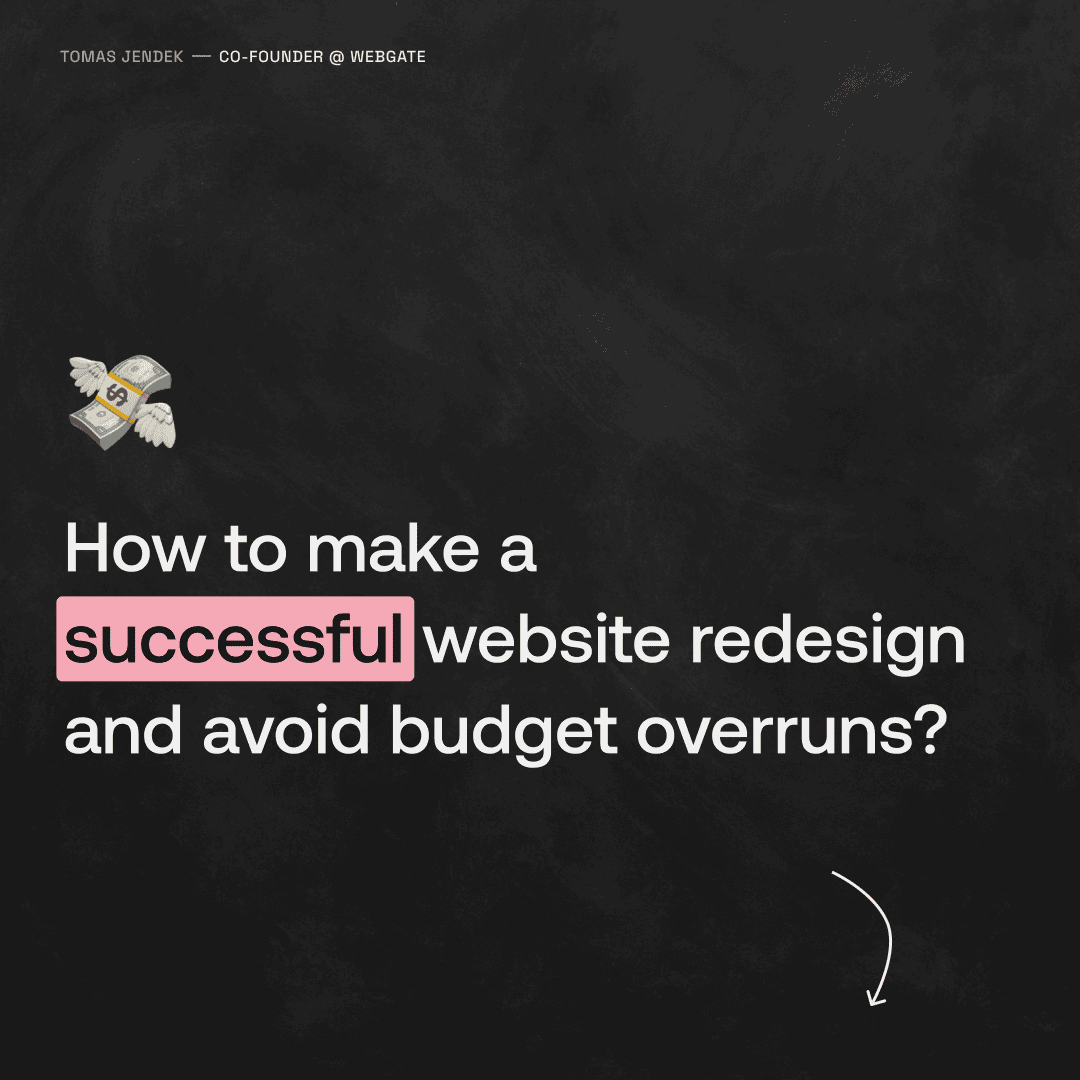In today’s digital landscape, a website serves as the face of a business, making it crucial to have an online presence that stands out. Choosing the right website redesign agency has a significant impact on a company’s success, affecting everything from user experience to conversion rates. A skilled agency can transform an outdated site into a powerful tool for attracting and retaining customers while also ensuring optimal performance across devices.
When embarking on a website redesign project, companies must consider various factors to select the ideal partner. This article will explore the key steps to choosing a website redesign agency that aligns with specific business goals. It will cover assessing redesign needs, researching potential agencies, evaluating their approaches, and making the final decision. By following these guidelines, businesses can find an agency that excels in UI/UX design, SEO optimization, and web design and development, ultimately leading to a successful website migration and improved online presence.
Assess Your Website Redesign Needs
Before embarking on a website redesign project, it’s crucial to evaluate the current state of the website and set clear objectives for the redesign. This assessment phase helps businesses understand their needs and create a solid foundation for the redesign process.
Evaluate Current Website Performance
To begin the redesign process, companies should conduct a thorough evaluation of their existing website. This involves analyzing various aspects of the site’s performance and identifying areas that need improvement. Some key factors to consider include:
- User experience: Assess how easily visitors can navigate the site and find information.
- Loading speed: Evaluate the site’s loading time, as slow-loading pages can lead to high bounce rates.
- Mobile responsiveness: Check if the site adapts well to different screen sizes and devices.
- Search engine rankings: Examine the site’s visibility in search engine results for relevant keywords .
To gather this information, businesses can use tools such as Google Analytics and Google Search Console to review current metrics and performance. Conducting an SEO audit can also help identify major errors and areas for improvement [2].
Define Clear Redesign Goals
Once the current website’s performance has been evaluated, the next step is to establish clear, measurable goals for the redesign. These goals should be aligned with the company’s overall business objectives and address the issues identified in the evaluation phase.
When setting redesign goals, it’s important to follow the SMART framework:
- Specific: Set precise objectives, such as “increase website traffic by 20% year-over-year” instead of a vague goal like “increase website traffic”.
- Measurable: Ensure goals can be quantifiably tracked using tools like Google Tag Manager and Google Analytics.
- Achievable: Consider available resources, technical limitations, and historical performance when setting attainable targets.
- Relevant: Align goals with overall business objectives and prioritize areas that will have the most significant impact.
- Time-bound: Establish realistic timelines and deadlines for achieving the redesign objectives [2].
Some common data-driven objectives for website redesigns include:
- Increasing the number of visits and unique visitors
- Reducing bounce rate
- Improving time on site
- Enhancing domain authority
- Increasing new leads and form submissions
- Boosting total sales generated
- Improving SEO rankings for important keywords
Determine Budget and Timeline
The final step in assessing website redesign needs is to establish a budget and timeline for the project. The scope and complexity of the redesign will directly influence both factors.
When creating a timeline, consider the following elements:
- Project scope: Determine whether the redesign will involve minor updates or a complete overhaul of the site’s structure and functionality.
- Available resources: Assess the internal team, external contractors, and budget available for the project [1].
- Project phases and milestones: Break down the redesign into distinct phases with specific milestones to track progress.
- Dependencies: Identify tasks that rely on the completion of others to ensure a smooth workflow.
- Testing and feedback: Allocate sufficient time for testing and gathering user feedback.
The duration of a website redesign can vary significantly based on the site’s size and complexity. Simple websites with fewer pages may take a few weeks to several months, while large and complex e-commerce sites can require 3 to 5 months or more [4]. It’s essential to allow ample time for planning, development, and testing to ensure a successful redesign that meets the established goals and objectives.
Research Potential Redesign Agencies
Review Agency Portfolios and Case Studies
When researching potential website redesign agencies, reviewing their portfolios and case studies is crucial. A web design portfolio showcases the agency’s past work, allowing clients to evaluate the quality and quantity of their projects [5]. This collection of work helps determine if the agency is capable of handling specific projects.
When examining portfolios, consider the following key points:
- Relevant projects and case studies
- Statistics and proof of results
- Clear explanations of their process and tools
- Customized design work for each client
- Dedicated team for web development, content creation, and strategy consultation
Start by assessing the number of projects the agency has completed. This information reflects their efficiency and experience. Research each project carefully, noting both strengths and weaknesses in their approach.
It’s also important to consider the industries the agency has worked with. An agency specializing in a particular industry may have more relevant experience for your project. However, those with experience across multiple industries may offer a broader perspective.
Check Client Testimonials and References
Client testimonials and references provide valuable insights into an agency’s work ethic and results. These firsthand accounts can give you a better idea of what to expect when working with the agency. When reviewing testimonials, look for information about:
- Overall experience working with the designer
- Achievement of project goals and expectations
- Identification of pain points and solutions
- Communication clarity and frequency
- Handling of edits and revisions
- Ongoing website maintenance services
- Willingness to work with the agency again in the future
Don’t hesitate to request additional references and reach out to past clients directly. This allows you to ask specific questions about their experience and gain a more comprehensive understanding of the agency’s capabilities.
Evaluate Technical Expertise and Capabilities
When assessing a website redesign agency’s technical expertise, focus on their ability to deliver functional solutions that support user tasks and improve accessibility. Look for case studies that clearly identify client pain points, proposed solutions, and implementation methods.
Pay attention to the agency’s decision-making process and how they execute their solutions. This will give you insight into their problem-solving abilities and technical proficiency [6].
Consider the agency’s approach to analytics and measuring project success. Look for examples of how they have used data to demonstrate the outcomes of past projects. Some key metrics to look for include:
- Conversion rates
- Bounce rates
- Loading times
- Visitor-to-lead conversion rates
Additionally, evaluate the agency’s ability to incorporate your company’s voice and branding strategy into their designs. They should demonstrate a willingness to work within established identity guidelines while also offering suggestions for improvement when appropriate.
Lastly, assess the agency’s collaboration skills. Look for examples of how they have worked with other marketing teams. A successful website redesign requires effective communication and cooperation between the agency and your internal team.
By thoroughly researching potential redesign agencies using these criteria, you can make an informed decision and choose a partner that aligns with your project goals and company values.
Evaluate Agency Approaches and Processes
Understand Their Design Methodology
When evaluating potential website redesign agencies, it’s crucial to understand their design methodology. A well-structured approach ensures a smooth redesign process and aligns with the project’s goals. Agencies should demonstrate a clear understanding of key SEO considerations during website migration [7]. This includes preserving the overall URL structure, implementing a robust redirect strategy, and conducting comprehensive keyword research.
Effective agencies typically follow a collaborative learning approach, which can lead to deeper learning and better outcomes [8]. They should be able to explain how they plan for each stage of the redesign process, including setting clear expectations and establishing ground rules for participation and contributions.
Assess Communication and Collaboration Styles
Communication and collaboration are vital aspects of a successful website redesign project. Agencies should have a clear communication-oriented collaboration style emphasizing open sharing of ideas, opinions, and information [9]. This fosters innovation, improves productivity, and cultivates a sense of unity among team members.
Look for agencies that demonstrate:
- Regular check-ins and updates on progress
- Opportunities for feedback and discussion
- Clear explanations of how groups or peer discussions will operate
- Incorporation of self-assessment and peer assessment techniques
Effective agencies often use a combination of collaboration styles based on specific goals, culture, and nature of work [9]. They should be able to adapt their approach to suit different team members’ preferred collaboration styles, whether they are drivers, analysts, connectors, or innovators.
Review Project Management Practices
Examining an agency’s project management practices provides insight into their ability to handle complex redesign projects efficiently. Look for agencies that:
- Create a detailed timeline for the project, thinking in terms of months rather than days or weeks
- Assemble a dedicated team with clearly defined roles, including UX designers, project managers, marketing managers, content writers, and developers
- Use agile methodologies for planning and execution, with design cycles that include sketching, prototyping, and testing
- Provide regular updates and involve key stakeholders in major decision-making processes
Agencies should also demonstrate their ability to handle various aspects of the redesign process, such as:
- On-page optimizations, including metadata, title tags, and headings
- Content migration planning to avoid loss or duplication
- Mobile responsiveness and site speed optimization
- XML sitemap and robots.txt file management
- Implementation of monitoring and analytics tools for post-migration tracking
By thoroughly evaluating agency approaches and processes, businesses can select a partner that aligns with their goals and ensures a successful website redesign and migration.
Make the Final Selection
Compare Proposals and Pricing
When evaluating proposals from website redesign agencies, it’s crucial to consider more than just the price. While cost is an important factor, it shouldn’t be the sole determining element in the decision-making process. Website redesign projects can range from $3,000 to $75,000, depending on various factors such as the site’s size and complexity [12].
To make an informed decision, companies should create a comparison grid that includes key factors beyond price. This grid should list important criteria and assign a weighting to each factor based on its importance to the project. By using this method, businesses can objectively compare proposals and determine which agency best matches their overall requirements.
It’s important to note that the cheapest option isn’t always the best choice. A supplier that initially quotes a low price but delivers a low-quality project due to poor planning or limited technical skills may end up costing more in the long run. Therefore, companies should consider the agency’s track record, relevant project experience, and ability to deliver realistic estimates in terms of costs and timescales.
Evaluate Cultural Fit
Cultural compatibility between a company and its chosen website redesign agency can be the difference between project success and failure. To assess cultural fit, companies should consider several factors:
- Communication style: Evaluate how the agency communicates and whether it aligns with your company’s preferred style.
- Transparency: Assess the agency’s openness and willingness to share information about their processes and progress.
- Involvement expectations: Determine if the agency’s working style matches your desired level of involvement in the project.
- Trust: Gage whether you can trust the agency to provide the best solution for your needs.
During the selection process, companies should ask questions about the agency’s approach to understanding their business, goals, and target audience. This can provide insights into how well the agency aligns with the company’s culture and objectives.
Negotiate Contract Terms
Once a company has identified a preferred agency, the next step is to negotiate contract terms. A well-structured agreement is essential for a successful website redesign project. Key elements to consider during negotiations include:
- Scope of services: Clearly define the deliverables, milestones, and customer requirements in the agreement.
- Fee structure: Consider whether a time and materials or fixed fee contract is more appropriate for the project.
- Intellectual property ownership: Ensure that the company retains ownership of the unique viewable aspects of the website and any custom software code developed specifically for the project.
- Testing and completion provisions: Include timeframes for testing and consequences for failure to meet agreed specifications.
- Representations and warranties: Review the developer’s promises regarding the website’s performance and their commitment to correcting defects.
During negotiations, companies should be prepared to discuss their budget constraints and project goals openly. This transparency can help in finding mutually beneficial solutions and establishing a strong working relationship with the chosen agency.
Conclusion
Selecting the right website redesign agency is a crucial step in improving a company’s online presence. By carefully assessing redesign needs, researching potential agencies, and evaluating their approaches, businesses can find a partner that aligns with their goals and values. This process has a significant impact on the success of the redesign project, affecting everything from user experience to conversion rates.
In the end, making the final selection involves comparing proposals, evaluating cultural fit, and negotiating contract terms. By taking a thorough and thoughtful approach to choosing a redesign agency, companies can set themselves up for a successful website migration and an improved digital footprint. Remember, the right agency can transform an outdated site into a powerful tool to attract and retain customers, ultimately boosting the company’s online success.
FAQs
1. How do I select an appropriate web design agency for my needs?
To find a suitable web design agency, follow these steps:
- Step #1: Ensure they have experience in your specific industry.
- Step #2: Clearly define what you need from them.
- Step #3: Determine your budget for the project.
- Step #4: Review the agency’s own website and their portfolio to gage their capabilities.
- Step #5: Examine their previous projects to assess their expertise.
- Step #6: Contact the agency directly to discuss your project and their approach.
- Step #7: Insist on a superior user experience in their deliverables.
2. What is the typical cost range for hiring a freelancer to redesign a website?
The cost to hire a freelancer for a basic website redesign usually falls between $2,000 and $10,000. This range varies based on the size and complexity of the website.
3. What steps should be taken to effectively plan a website migration?
Effective website migration planning involves several phases:
- Phase 1: Define the scope of the migration.
- Build a dedicated migration team.
- Identify potential issues and set clear objectives.
- Discuss the risks and set expectations.
- Outline all necessary tasks.
- Select an optimal time for the migration to go live.
- Specify the SEO requirements.
- Consider the design aspects.
4. How much does it typically cost to redesign a website in the USA?
Costs for redesigning a website can vary greatly:
- A DIY redesign can cost between $100 to $3,000, depending on the tools and resources used.
- Working with a professional agency can range from $15,000 to $30,000 or more.
- For larger and more complex websites, costs may range from $40,000 to $75,000.
References
[1] – https://northmacservices.com/from-start-to-finish-a-timeline-for-website-redesign-projects/
[2] – https://www.bluecompass.com/blog/how-to-measure-website-success-in-a-redesign-goals-kpis-and-roi
[3] – https://blog.hubspot.com/blog/tabid/6307/bid/33924/how-to-develop-a-website-redesign-strategy-that-guarantees-results-free-template.aspx
[4] – https://connectivewebdesign.com/blog/how-long-does-a-website-redesign-take
[5] – https://sharptackmedia.com/tips/evaluating-web-design-agencys-portfolio/
[6] – https://blog.tbhcreative.com/website-redesign-portfolio/
[7] – https://gofishdigital.com/blog/website-migration-guide/
[8] – https://teaching.cornell.edu/teaching-resources/active-collaborative-learning/collaborative-learning
[9] – https://www.togetherplatform.com/blog/4-types-of-collaboration-styles-to-use-in-the-workplace
[10] – https://www.semrush.com/blog/website-migration-checklist/
[11] – https://uxstudioteam.com/ux-blog/website-redesign/
[12] – https://www.webfx.com/web-design/pricing/redesign/
[13] – https://www.linkedin.com/pulse/how-can-i-effectively-compare-different-proposals-my-website-project
[14] – https://www.linkedin.com/pulse/compatible-cultures-tips-hire-right-web-design-agency-dave-skorepa
[15] – https://www.tobaccolawblog.com/2012/08/tips-for-negotiating-your-website-development-contract/
[16] – https://www.sociallyinfused.com/website-design/tips-for-selecting-the-right-web-design-agency/







